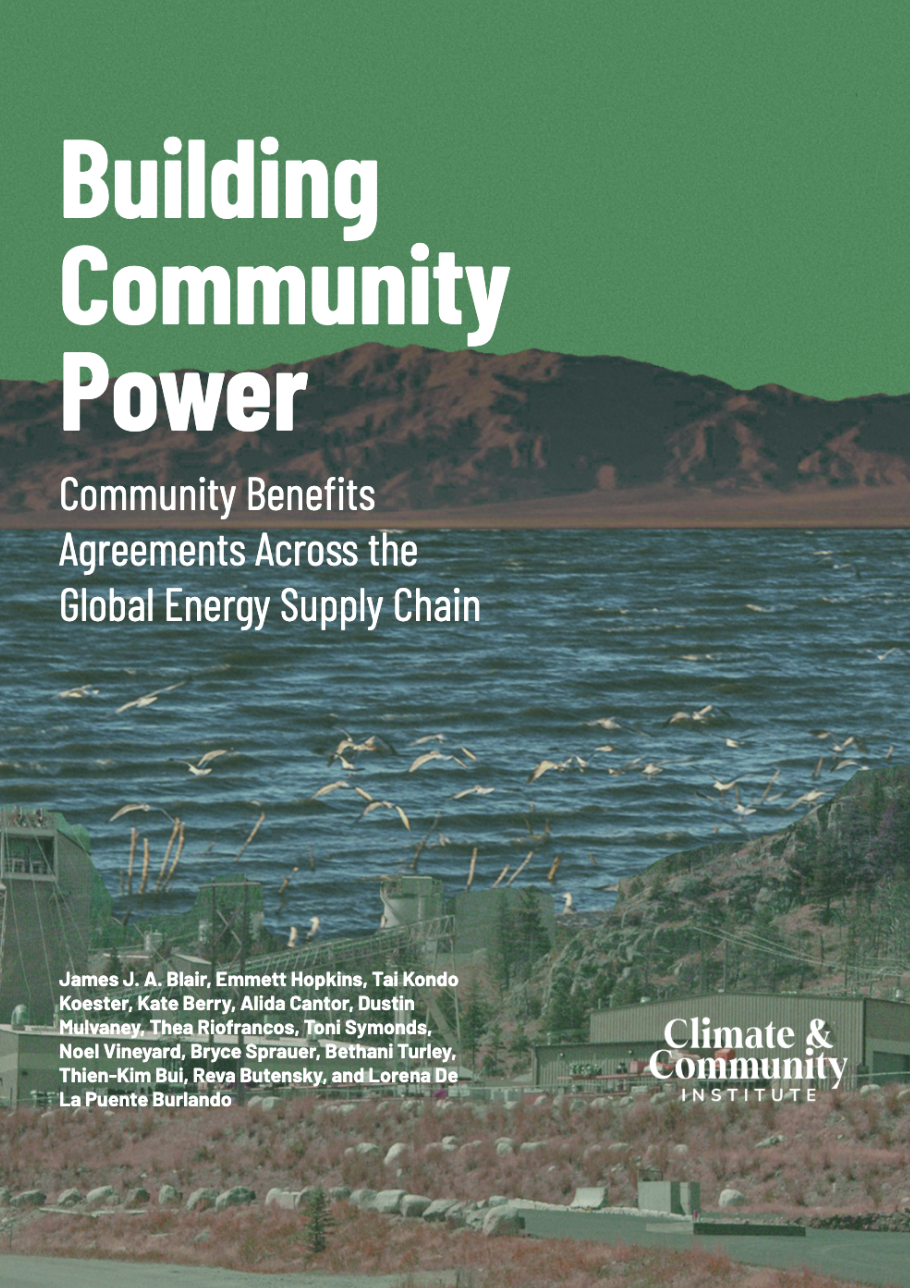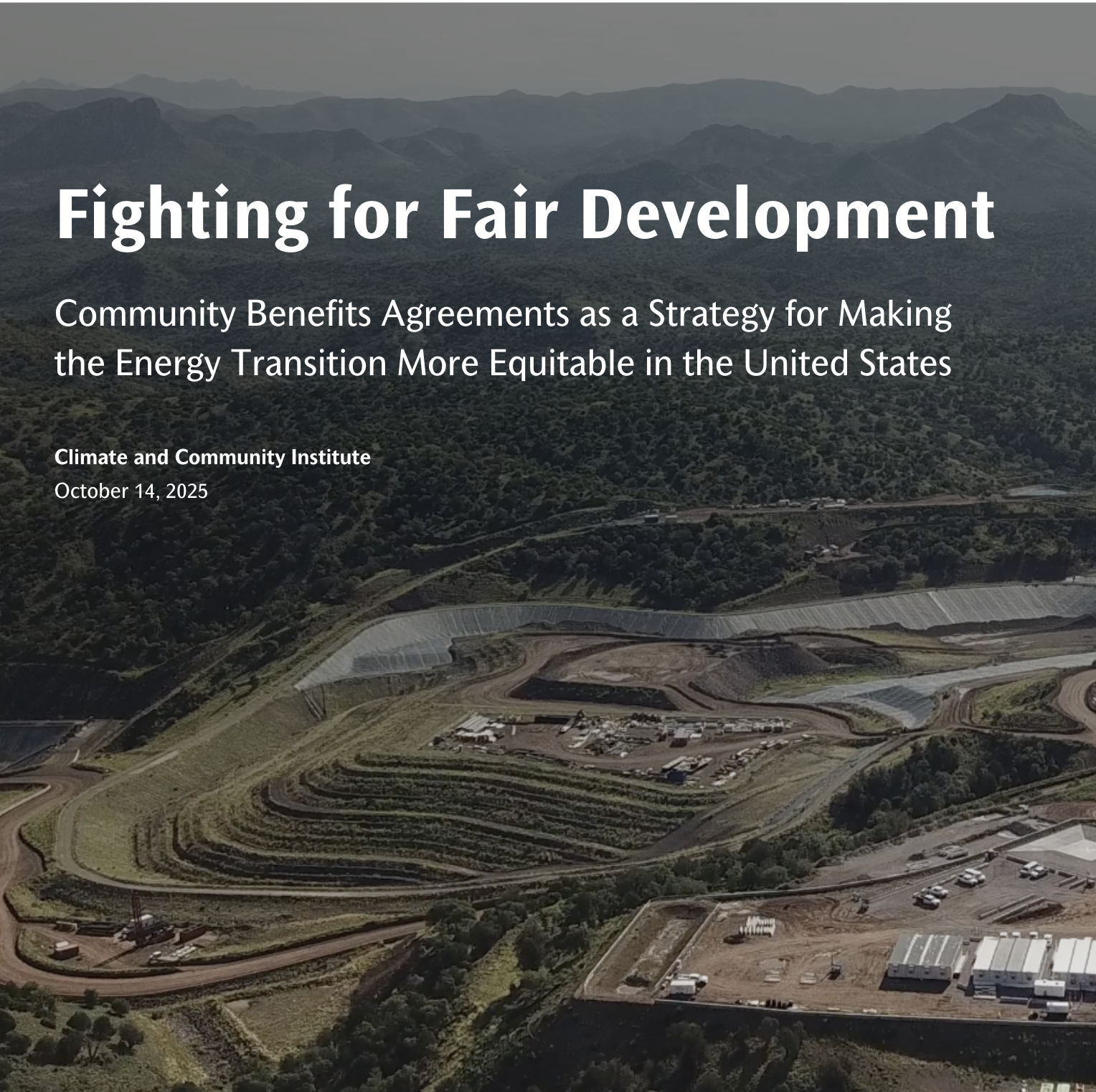Community Benefits Agreements
Comprehensive resources on how communities can deploy CBAs to shape their futures
In the face of energy transition projects, communities can deploy community benefits agreements (CBAs) to exert control over their futures. When communities get organized early, know their rights and opportunities, and work in coalition, they have the power to shape the political economy of the energy transition.
The Report
Over the past two years, the Climate and Community Institute (CCI) conducted research spanning the globe on CBA best practices, interviewed communities actively involved in CBA negotiations, and consulted preeminent scholars and practitioners of CBAs and the energy transition on policy design.
Our new report, Building Community Power: Community Benefits Agreements Across the Global Supply Chain, finds that when they strategically employ CBAs, communities can shape how burdens and benefits are distributed, how projects are designed and governed, and even whether or not a project moves forward at all.

In fact, the entire supply chain of the energy transition—from extraction to processing, manufacturing, and transportation, as well as electric power generation, storage, and transmission—offers opportunities for cross-sectoral organizing and equitable governance.
Building Community Power can help community organizers and advocates working with Tribes, environmental justice groups, and labor movements. It can also offer insights to project developers seeking to build trust and positive relationships with communities. The report includes detailed case studies, policy analysis, and concrete recommendations.
Top Recommendations
- Require CBAs: Governments can mandate CBAs as a contingency for permitting or financing with clear criteria that maximize community representation and address governance, financial, labor, environmental, and enforcement concerns.
- Establish clear and consistent standards for CBAs: Communities can define what provisions need to be included in a strong CBA.
- Set the stage for CBA negotiation: The public sector can build the conditions to give communities more power to negotiate fair agreements.
- Directly equip communities to negotiate for CBAs: Organizers can advocate for more resources to support communities that require further assistance.
At any given link in the supply chain, strong CBAs can offer a mix of provisions based on local priorities that matter most for community members.
- Governance: provide input on project design and management, set terms, and manage CBA outcomes
- Financial: go beyond “pay to play” corporate handouts with revenue set-asides
- Labor: build a local workforce and bring lasting economic development through CBAs
- Environmental: produce net environmental benefits and cultural revitalization
- Enforcement: hold companies and governments accountable
Case Studies
Explore some of the report’s case studies in our storymap.

Meet the authors

James J.A. Blair
Cal Poly Pomona

Emmett Hopkins

Tai Kondo Koester

Dustin Mulvaney
Environmental Studies,
San José State University

Thea Riofrancos
Associate Professor of Political Science,
Providence College

